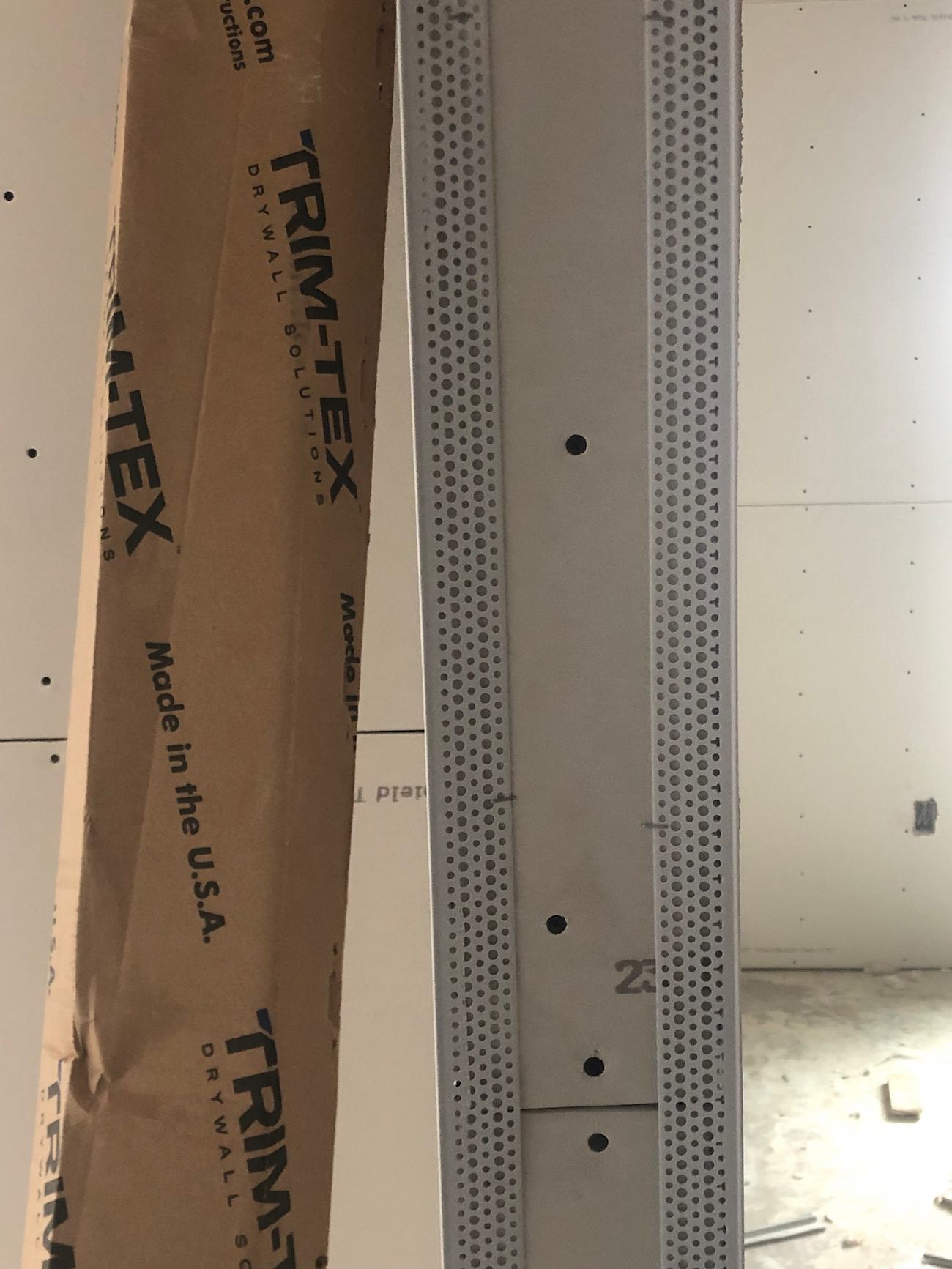In 2021, the cost of steel hit an all-time high, making metal corner bead a pricier part of a drywall finishers’ inventory than ever before. These skyrocketing prices meant that, for the first time, a whole lot of drywall pros we’ve spoken to have started searching for an alternative to metal corner bead, and began making the leap to vinyl corners. And even as steel costs have started to slowly come back down to earth (although, with a high degree of volatility, who’s to say steel prices won’t soar back upward again at a moment’s notice?), these vinyl converts haven’t looked back.
Trim-Tex has more than 200 profiles of vinyl drywall solutions, which can be a bit overwhelming if you aren’t already a vinyl corner bead aficionado. If you’re looking for an alternative to metal corner bead and aren’t used to vinyl — and don't want to dive into the deep end right away — we recommend you get started by using our Closed Angle Rigid Low Profile corner bead. This Closed Angle corner bead is an easy transition from metal with less headaches during the adjustment period.
Why Closed Angle? Let’s dig into what this unique bead is and how you can make the leap to vinyl easier.
What Is a Closed Angle Corner Bead?

The Closed Angle variation on our Rigid Low Profile Corner Bead sports an 81-degree angle, rather than the standard 90 degrees. It was first created to help finishers work with imperfect framing, where the angle on one end of a corner might be slightly wider than the other.
Like with a metal corner bead, a vinyl Closed Angle bead allows the finisher to push the bead in wherever you need to — whether the angle is 81 degrees or a full 90 — without buckling or flaring out when you’re stapling it in.
Essentially, you’re getting all the benefits of a metal corner bead in these kinds of areas, with none of the drawbacks. (Closed Angle is also available in an extra-wide Jumbo form for larger details.) The vinyl bead is far more impact-resistant, far more easily repaired if damage does occur, won’t rust and each bead is made from at least 70 percent recycled materials. It’s the best of both worlds!
Why Closed Angle as an Alternative to Metal Corner Bead?
This similarity to the behavior of metal is what made our Closed Angle corner bead a hot commodity when the price of vinyl started becoming less expensive than metal. For instance, in Florida right now, we’ve been visiting many residential and multifamily jobsites to show how they can use our Closed Angle vinyl bead as a replacement for their usual metal materials. These visits have resulted in about a 75 percent conversion rate.

Why? Well, for some lifelong metal corner bead users, there can sometimes be some growing pains in the shift to vinyl beads. Vinyl corners may be superior to metal ones in many ways, but they don’t behave exactly the same.
If you hand someone who’s only ever used metal a stick of Trim-Tex’s standard 90-degree vinyl corner bead, chances are they’ll be used to metal’s rigidity and firmness, and will press the bead too hard into the corner during installation. Too much pressure during this phase could cause the bead to wiggle and twist while you’re working with it, and can cause the mud legs to flare out, giving you an imperfect finish with visible flanges under the mud.
On the other hand, using the Closed Angle corner bead just feels like installing metal. Its rigidity simplifies installation for long-time metal fans — it holds its form without giving you any issues. When you press it into the wall, you can feel that tension and won’t over-push it. For this reason, beyond Closed Angle’s functionality as a solution for imperfect framing, it can act as a great set of training wheels for frustrated finishers who want an easy alternative to metal corner bead.
If you’re a finisher fed up with the limitations of metal, start here, and pretty soon, you’ll be singing the praises of all kinds of vinyl corner bead. Get a look at Closed Angle Rigid Low Profile corner bead and its Jumbo variety for yourself by hitting the button below to request a free sample.
